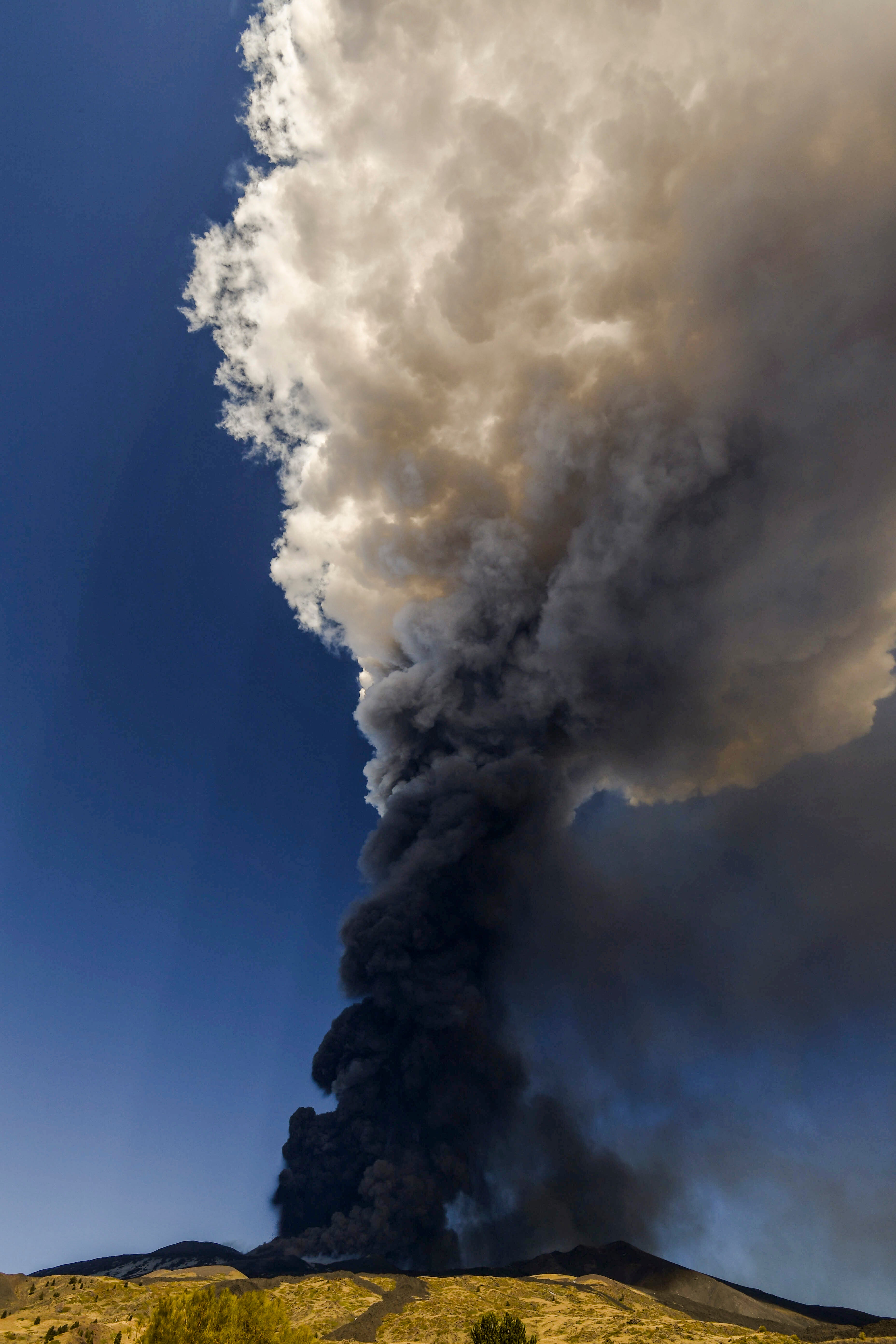Mount Etna roars again, sends up towering volcanic ash cloud
Mount Etna has roared back to spectacular action after a few months of relative quiet

Your support helps us to tell the story
From reproductive rights to climate change to Big Tech, The Independent is on the ground when the story is developing. Whether it's investigating the financials of Elon Musk's pro-Trump PAC or producing our latest documentary, 'The A Word', which shines a light on the American women fighting for reproductive rights, we know how important it is to parse out the facts from the messaging.
At such a critical moment in US history, we need reporters on the ground. Your donation allows us to keep sending journalists to speak to both sides of the story.
The Independent is trusted by Americans across the entire political spectrum. And unlike many other quality news outlets, we choose not to lock Americans out of our reporting and analysis with paywalls. We believe quality journalism should be available to everyone, paid for by those who can afford it.
Your support makes all the difference.Mount Etna has roared back to spectacular action after a few months of relative quiet, sending up a 12-kilometer (7.5-mile) high volcanic ash cloud over eastern Sicily.
The lava flow from Etna, one of Europe’s most active volcanoes, was centered around the crater on the mountain’s southeast slope, Italy’s National Institute of Geophysics and Vulcanology said Monday.
There were no immediate reports of injuries or property damage on the inhabited towns ringing the slopes of the volcano, which is popular with hikers, skiers and other tourists.
By Monday afternoon, the lava flow from the crater had stopped, the institute said. But earlier in the day, while the volcanic cloud was pouring out of Etna, the institute issued a warning for aircraft in the area.
The towering cloud, visible for kilometers, was the latest impressive show of Etna's power this month. Earlier in February, a particularly powerful eruption sent bolts of lightning dramatically across the sky over eastern Sicily.
Etna has had scores of known eruptions in its history. In 1669, in what has been considered the volcano’s worst-known eruption, lava buried a swath of Catania, the largest city in the east on the island of Sicily, and devastated dozens of villages.
More recently, in 1983, dynamite was used to divert lava threatening towns. In 1992, the army built an earthen wall to contain the lava, flowing from Etna for months, so it wouldn't barrel into one of the villages on the slopes.